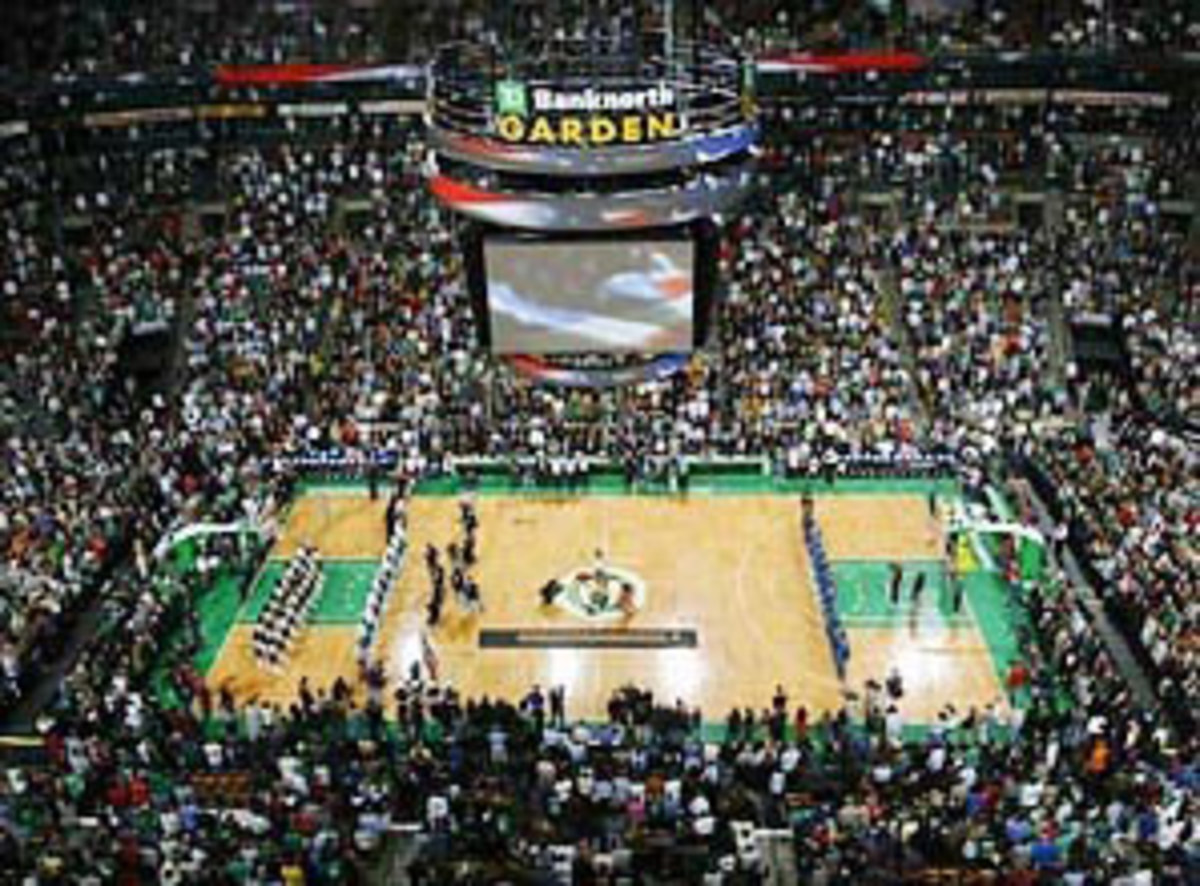Boston Garden housed golden age of NBA


I don't remember the first time I paid visit to the Boston Garden in the early 1980s, but I do remember the smell. You walked up the staircases to the upper back of the arena where the incense of boiled hot dogs from the press room gathered with the humidity of the playoff season. The worse the smell, the bigger the series.
While growing up in Oregon as a Canadian son of European immigrants, I would sit on the floor of the family room in front of our TV watching Bernie Carbo homer at Fenway or John Havlicek make basketball look like an incredibly fatiguing sport. A decade later I arrived in Boston to find that the Boston Garden was a "dump,'' according to the growing numbers of Bostonians who wanted to tear it down. I learned to view it as a dive bar, a place judged less by its outfittings than by its patrons. The Celtics locker room was full of personality, self-esteem and intelligence. Among all of their best players there wasn't a single dummy, and Larry Bird remains one of the smartest athletes I've ever known. They (and the Bruins, though I rarely saw them play) brought life to the old building shortly before its death.
In the 1980s the NBA wasn't throwing T-shirts into the audience, there were no dance teams and all of the noise was generated by the customers. The music came from John Kiley playing the organ high up among the cheap seats at a pitch so soft that you couldn't name the tune. During timeouts he would gently play away while the crowd murmured like a symphony audience before the conductor raises his stick. Of course, people would take advantage of the interludes to yell at the referees if things weren't going well. One Sunday afternoon Jake O'Donnell could hear a woman screaming: "You're an ahm-pit, Jake! You're an ahmpit!'" We turned around to see that it was one of the Celtics' wives.
The closest thing to a mascot the Celtics had then, and only for a short time, was an exotic dancer named Busty Heart, who appeared late one regular season in a white tank top walking the aisles while gasping fans pointed as if they'd just seen a phantom of the opera. She followed the Celtics to the 1984 NBA Finals against the Lakers, but I don't remember her coming back the following seasons.
This was the golden era of the NBA, and it was achieved without all of the artificial noise and hysteria that is piped in today. Fans knew when to clap without need of a Gene Hackman video clip on the scoreboard.
The visitors locker room for basketball games at the Garden was every bit as small and overheated as the legends say. During the 1985 NBA Finals, I was assigned by the Boston Globe to write a pregame story about Bob McAdoo of the Lakers. I went into the locker room and he invited me to sit down next to him, and we whispered an interview to each other as his teammates sat shoulder-to-shoulder on the L-shaped bench. Every once in a while I would glance at the celebrities: Magic Johnson, James Worthy, Byron Scott . As we talked I remember a mysterious bouquet of flowers being delivered to Kareem Abdul-Jabbar.
One night in 1987 I was sitting at the press table behind the basket watching the Celtics struggling to stay with the Detroit Pistons in Game 5 of the conference finals. The Celtics turned the ball over trailing by a point with 5 seconds left, and the building was quiet as no NBA arena is allowed to be today. Isiah Thomas inbounded the ball, Bird put a hand on it and pirouetted at the baseline on the far side of the basket near me before feeding Dennis Johnson for the layup that saved the series. As Bird reached out for the ball there was a gasping sound like thousands of natural gas valves opened at once; when DJ's layup banked in there came a roar of 14,000 pilot lights lighting up at once as the fans jumped to their feet. The next day I was on the Celtics' flight on Northwest to Detroit -- they flew commercially back then -- and as Bird walked through the E Terminal at Boston airport he was applauded.
Years later I was driving by the old Garden midway through its demolition to make room for its new replacement arena next door: Half of the building had been torn away, while the remainder was just as it had been. Through its gaping hole I could see the yellow balcony seats and the old advertisements on the walls. It was a strange, sad demise.
2. Fenway ParkStill the best place to watch a baseball game, even if my knees don't fit in the grandstand seats
3. Dyche Stadium, Evanston, Ill.I saw major leaguer Rich Raffin play one of the great games in Northwestern history there in 1982
4. Peace And Friendship Stadium, AthensHome to some of the most violent basketball games ever seen.
5. Palais Omnisports, ParisAn eccentric arena with grass growing on the exterior vertical walls more lush than my front lawn (as the neighbors will attest).
